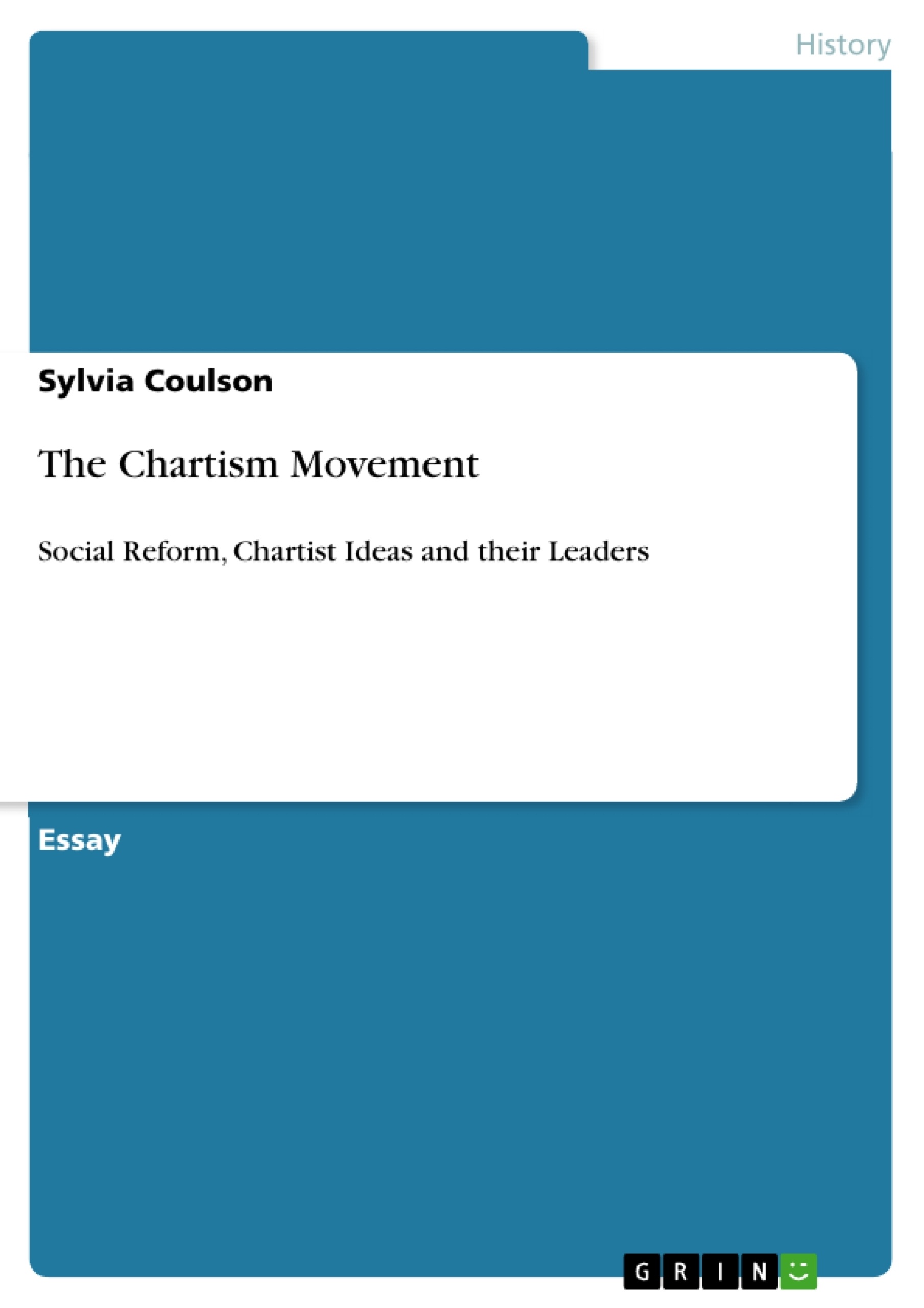An evaluation regarding the aims and achievements of the Chartist movement as well as an exploration on the argument that Chartism was more than a "knife and fork rebellion".
The effectiveness of the leaders is analysed, with reference to tactics and "moral and physical force".
Chartism evolved from massive social and economic unrest in the 1830s amongst the working-class due to changes from the industrial revolution which created food shortages and unemployment. It was a politically orientated movement led on behalf of the working class, in support of poor housing and working conditions. Chartism was split into two different groups known as 'moral' and 'physical' force chartists. Fergus O'Connor led the physical force chartists whilst William Lovett led the moral force chartists. Both groups employed different means and tactics to try to get government to consent towards achieving the vote for the working-class by means of document known as a charter.
Inhaltsverzeichnis (Table of Contents)
- The Chartist Movement
- Political Reform
- Chartism and the Poor Law
- Chartism and the Corn Laws
- The Anti-Corn Law League
- Physical and Moral Force Chartists
- The Land Plan
- The Chartist Petition of 1848
- Plug Plots and Riots
- The Tolpuddle Martyrs
- Luddism
- The Charter
- The Legacy of Chartism
Zielsetzung und Themenschwerpunkte (Objectives and Key Themes)
This text provides an overview of the Chartist Movement, a working-class political movement in 19th century Britain. The main objective is to explore the social, economic, and political factors that led to the rise of Chartism, as well as the movement's key goals and strategies. Key themes and ideas include:- The impact of the Industrial Revolution on the working class
- The struggle for political representation and voting rights
- The use of various tactics, including petitions, demonstrations, and riots
- The influence of different factions within the Chartist movement, including "moral force" and "physical force" chartists
- The movement's legacy and its lasting impact on British society
Zusammenfassung der Kapitel (Chapter Summaries)
This text explores the origins and development of the Chartist Movement in 19th century Britain. It examines the social and economic conditions that led to the movement's emergence, focusing on the impact of the Industrial Revolution, the Poor Laws, and the Corn Laws. The text then delves into the movement's key figures, including William Lovett and Fergus O'Connor, and their differing approaches to achieving political reform. The reader is introduced to the Chartist Charter and its six points, which aimed to secure universal manhood suffrage, annual elections, a secret ballot, equal electoral districts, abolition of property qualifications for MPs, and salaries for MPs. The text highlights the various tactics employed by Chartists, including petitions, demonstrations, riots, and strikes. It also explores the movement's legacy and its lasting impact on British society, including its role in advancing working-class rights and influencing the development of the Labour Party.
Schlüsselwörter (Keywords)
This text centers on the Chartist movement and its historical context, focusing on key concepts including: industrial revolution, social reform, political representation, voting rights, economic inequality, working class, Chartist Charter, petitions, demonstrations, riots, moral force, physical force, trade unions, and the legacy of Chartism.- Arbeit zitieren
- Sylvia Coulson (Autor:in), 2009, The Chartism Movement, München, GRIN Verlag, https://www.grin.com/document/280433



